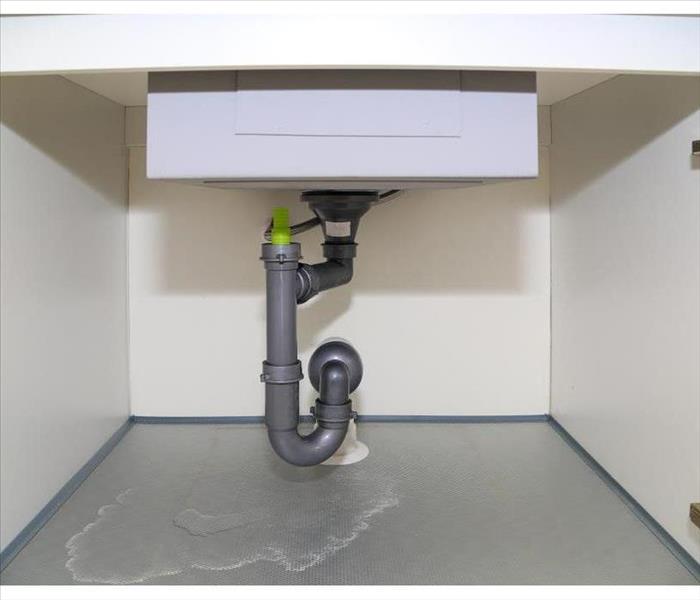Why Is There Water Under My Cabinet?
11/15/2022 (Permalink)
Why Is My Cabinet Under Water?
Water under the kitchen cabinets is not a good sign. It usually means there's a leak in your pipes, and it should be dealt with ASAP to prevent any further damage. If you notice water under the kitchen sink, follow these steps as soon as possible to minimize water damage.
Whether it's a stain or water pooling in the cabinet, water under the kitchen cabinets is not a good sign. If you're not sure why there's water under your cabinets, here are four things to keep in mind:
- Water damage can be expensive to fix. The sooner you deal with a leak, the better—especially if it's coming from pipes located inside an exterior wall. In this case, you may want to call your insurance company as soon as possible and ask them what steps you should take next.
- Waiting too long could cause more problems than one leaky pipe!
If you notice water under the kitchen sink, follow these steps as soon as possible to minimize water damage.
- Shut off the water supply. The first thing to do after noticing water under your cabinet is to turn off the main valve that controls the water supply to your house. Turn it clockwise until it's closed, and then confirm that there is no more running water in your sink or tub before proceeding further.
- Check for leaks in pipes or fittings. If there are leaks anywhere on your plumbing system, they need to be addressed before anything else can be done with this situation.
Shut off the water supply.
If you notice water under your cabinet, the first thing to do is shut off the main water supply. This can be done by turning off the main valve on your house or apartment building if it hasn't already been turned off.
If you're not sure how to find this valve or how to turn it off, call a plumber who can help. If there are multiple shut-off valves under sinks in your home, turn them all off as well — but keep in mind that doing so may temporarily stop other water sources from working properly until they're all turned back on again!
Check for any leaks in the pipes.
If you discover that your pipes are leaking, you may need to call a plumber. Your water bill will be affected by the leaks, so make sure that you have an accurate record of how much water is being used in your house. The next time the plumber comes by for an inspection, ask him or her about ways to prevent future leaks from occurring.
If you can't find the source of the leak, call a plumber.
If you can’t figure out where the leak is coming from, it might be time to call in a professional. The cabinet company or home builder that installed your cabinets may recommend a plumber or contractor, but if not, you’ll have to do some searching on your own.
The first place to look is your insurance company: if you have homeowners' or renters' insurance coverage and the damage was caused by flooding (for example), you may be able to get reimbursed for the cost of repairing or replacing damaged goods like flooring and cabinets. Check with your agent before paying anything out of pocket because they could help you file a claim that could result in savings down the road.
Dry out the cabinet and clean up the area.
If you have a lot of water and your cabinet is still wet, use a wet/dry shop vac to remove as much water as possible. If this doesn't work, check for leaks again. If the leak persists, it's time to call in the professionals.
If you're lucky, the source of the leak will be easy to find and fix. If not, you may have to call a plumber or other contractor to take care of it. If there's water damage under your cabinets, contact your insurance company as soon as possible so they can help cover any costs related to fixing the problem or replacing damaged items like drywall or floorboards if necessary.




 24/7 Emergency Service
24/7 Emergency Service
